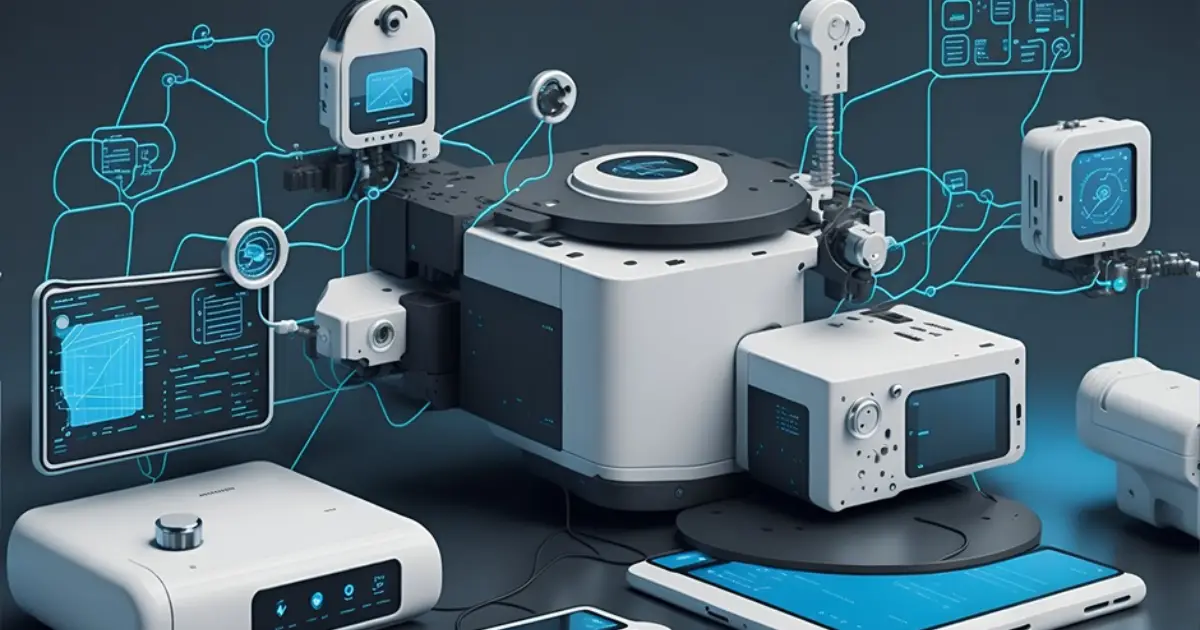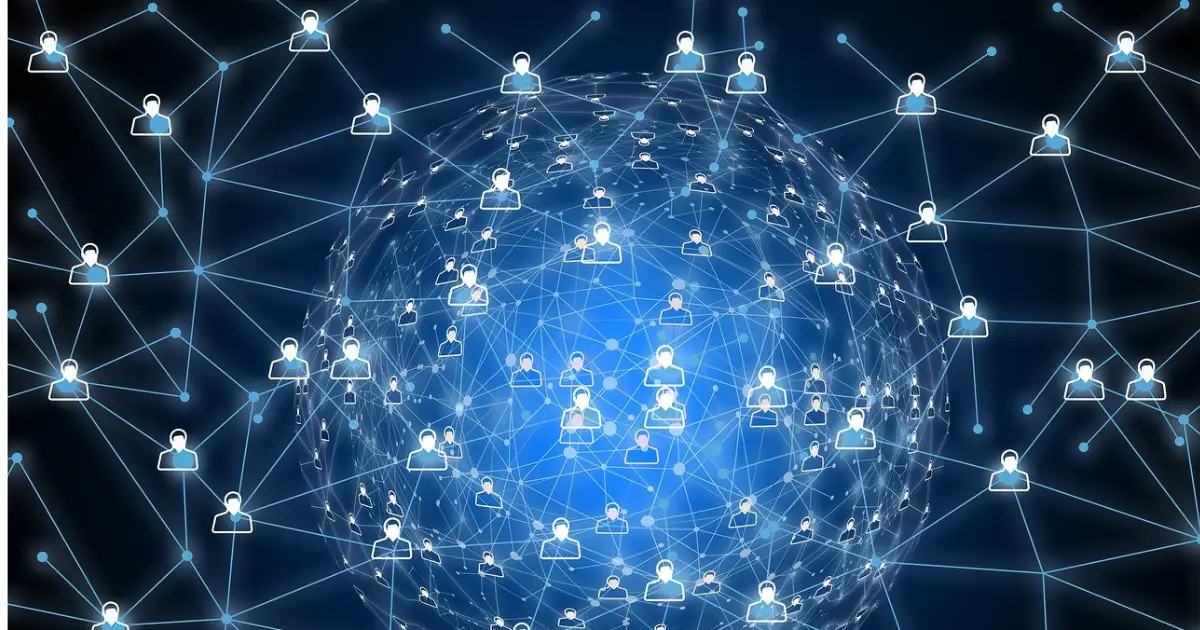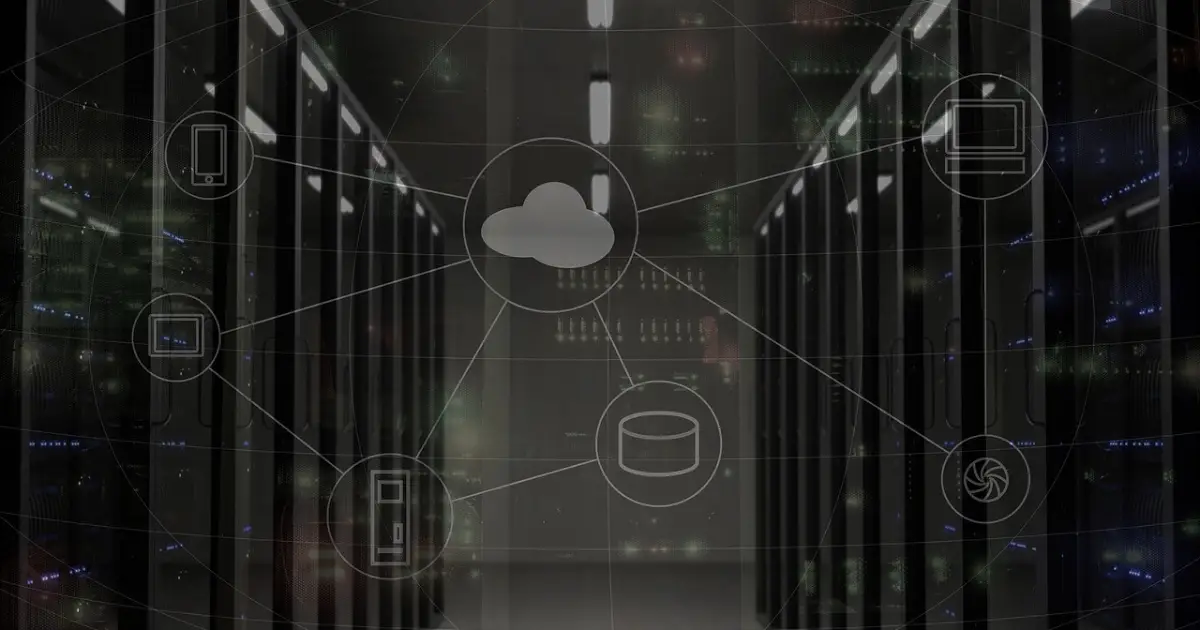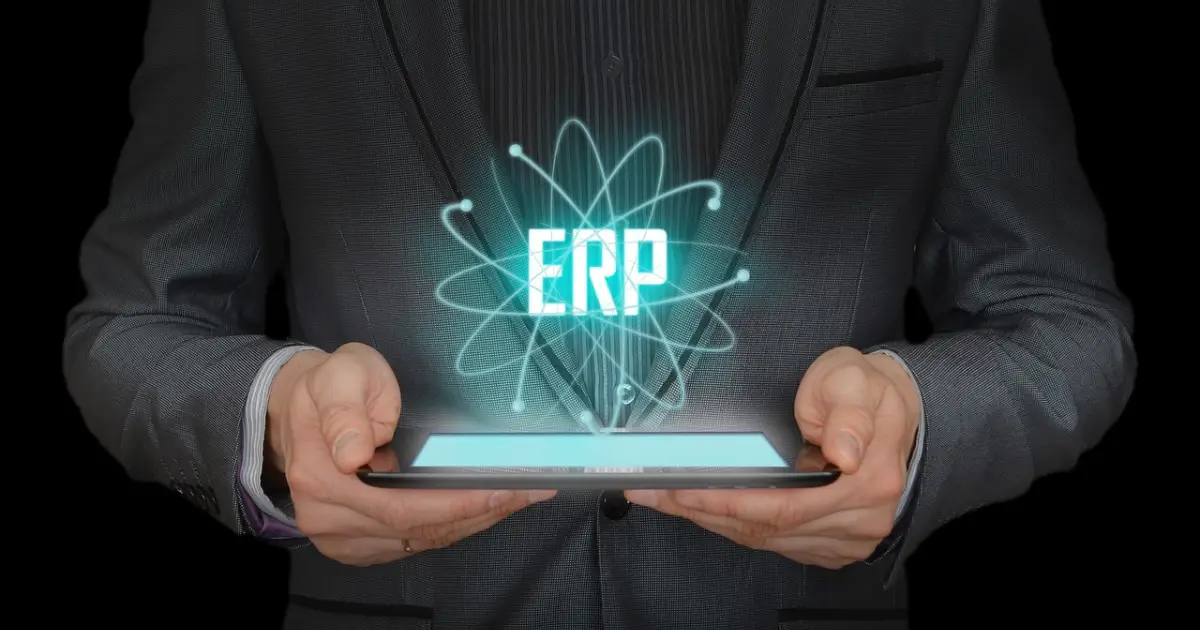focus notes


IoT gateway is a communication relay device! Explaining the mechanism and examples of implementation in industry

table of contents
"I don't know what an IoT gateway is"
“I want to know the points to consider when choosing an IoT gateway.”
If you are considering introducing IoT, you may have questions like the ones above. First, an IoT gateway is a device that plays roles such as sending and receiving data and controlling the operation of devices.Converts the data acquired by the sensor into a state that can be communicated over the Internet. This allows communication with the server cloud. Therefore, when choosing an IoT gateway, pay attention to things such as processing speed and the number of supported communication standards.
In this article, we will explain the role and mechanism of IoT gateways, points to consider when choosing a product, implementation examples, and frequently asked questions about IoT gateways. Please refer to it.
What is an IoT gateway? Explaining the role and mechanism
We will explain what an IoT gateway is in the following three sections.
- What is IoT Gateway?
- How IoT Gateway works
- First of all, what is IoT?
What is IoT Gateway?
An IoT gateway is a device that relays data transmission and reception between IoT devices.It plays the role of connecting IoT devices with the server or cloud that stores the data acquired by the IoT devices.
Not only that, the IoT gateway also has three roles:
- data conversion
- Data processing
- Ensuring security
Data conversion involves converting the various data acquired by sensors into communication protocols that can be communicated over the Internet. By sending the converted data to a server or cloud, system administrators can check the data.
The role of the IoT gateway is to analyze data and control the operation of devices based on the analysis content. The data processing performed by the IoT gateway enables smoother communication and operation.
Furthermore, since IoT uses the Internet, risks such as cyber attacks must be considered. Therefore, it also plays a role in ensuring security, such as encrypting data and executing authentication processes, so that communications can be carried out in a safe manner.
As described above, IoT gateways are devices that fulfill a variety of roles. Because they are closely related to data transmission and reception, device operation control, and security, it is important to pay attention to the performance of IoT gateways when introducing IoT.
As a side note, gateway is a word that has the meaning of ``entrance/doorway.'' Therefore, the name IoT gateway has the meaning of ``data entrance/exit in IoT system.''
How IoT Gateway works
The basic structure of an IoT gateway is as follows:
| flow | Concrete example |
|---|---|
| Send and receive data from IoT devices | Receive data accumulated by motion sensors, etc. |
| Convert protocol | Convert data to standard protocols or data formats for the cloud |
| Preprocess data* | Perform data filtering, analysis, compression, etc. |
| Handles security aspects | Perform data encryption and authentication processes |
| Send to server or cloud | Send converted and processed data |
*Basically, this is only carried out for edge gateways (IoT gateways equipped with edge computing). Traditional IoT gateways are often primarily responsible for receiving, protocol conversion, and forwarding data. See below for details on edge gateways.
The first thing an IoT gateway does is aggregate the data acquired by the sensors. It then converts the communication protocol so that the aggregated data can be transmitted over the Internet, enabling mutual communication between devices and servers/clouds. In some cases, the IoT gateway processes the data and then sends the processed data to a server or cloud.
During communication, it handles security aspects such as encrypting data and performing authentication processes. This is an essential process to prevent cyber-attacks such as information being stolen or illegally rewritten by an external party.
The data is sent to the server cloud with security aspects taken care of. In this way, by intervening and relaying the IoT gateway between the device and the server/cloud, data can be sent and received without a hitch.
First of all, what is IoT?
IoT is a system that connects things to the Internet.Various things can be connected to the Internet and can be controlled and monitored remotely.
Previously, only computers such as PCs and smartphones could be connected to the Internet. As IT has advanced and devices have become smaller, it has become possible to incorporate communication devices into a variety of things, and as a result, everyday products have become able to be connected to the Internet.
For example, IoT has been put to practical use in household appliances, such as air conditioners that automatically adjust the temperature and vacuum cleaners that can be operated remotely. In public transportation, IoT is now being used to provide services that provide real-time information on the current location of route buses. In this way, IoT is being used to improve convenience in various aspects of our lives.
It is also used in a variety of business fields, including:
- manufacturing industry
- logistics
- medical care
- Agriculture
- Eating and drinking
By utilizing IoT, it is possible to automate and streamline tasks that were previously performed by humans. Effective use of IoT can also be expected to improve productivity.
For more information on IoT, please refer to the following article.
IoT stands for Internet of Things! Explaining how it works, what it can achieve, and examples of its implementation
Explaining the points to consider when selecting an IoT gateway product
There are four points to consider when selecting an IoT gateway product:
- Fast processing speed
- Many compatible communication standards
- Large number of connection interfaces
- Flexibility when trouble occurs
Fast processing speed
When choosing an IoT gateway product, check the processing speed.The operating time of the entire system changes depending on the processing speed.
If the processing speed is slow, it will take time to convert the protocol and relay the aggregated data. For example, there may be a time lag between when a sensor captures data and when it is sent to a server or cloud. Even when issuing instructions from a server or cloud, it takes time to process and it takes time to operate. If this happens, it will not work at the intended timing.
IoT devices are systems that can collect data and issue instructions remotely in real time. However, if the processing speed is slow, real-time performance may be compromised.
Conversely, faster processing speeds allow for smoother data processing. This allows for smoother data transmission and reception, and shortens the time it takes from issuing instructions to operating an IoT device. To utilize IoT while maintaining real-time performance, be sure to check the processing speed when introducing the product. If it is not listed on the product page, please contact the company.
Many compatible communication standards
The variety of compatible communication standards is also an important point when choosing an IoT gateway.The more communication standards that are supported, the more types of protocols that can be communicated with.
A communication standard is like a set of rules for communication between communication devices. Each standard has different processing speeds and frequencies, and communication is not possible if the standards are different.
In Internet communications, data is exchanged using communication protocols that conform to these standards. If there are only a few compatible communication standards, it is not possible to convert the data into a compatible communication protocol. This can limit the data that can be sent and received, and the devices that can communicate.
Even if the communication standards are different, communication is possible if the standards are compatible. However, the communication speed may slow down due to the load on the communication. Continuing to operate under these conditions will slow down the entire system.
If it supports multiple communication standards, data can be sent and received by converting it to a communication protocol compatible with each communication standard. The number of types of data and devices that can be communicated has increased, and a wide variety of data can be exchanged, making it possible to operate with fewer restrictions.
Additionally, since it is converted to a communication protocol compatible with the communication standard, there is no burden on communication. This also stabilizes the communication speed. When introducing IoT, pay attention to the large number of communication standards that can be used to handle a variety of data.
Large number of connection interfaces
Also check the number of connected interfaces.The more connection interfaces there are, the more types of devices that can be connected. In the IT field, this refers to the connection parts that connect different devices and systems and the standards for exchanging data. The most common connection interfaces are as follows:
- HDMI
- USB
- LAN
- DI/DO
Devices with different connection interfaces cannot be connected. For example, Apple products' Lightning cables can be connected to iPhones, iMacs, etc. that have compatible interfaces. However, Android smartphones cannot be connected because they do not have an interface that allows you to connect a Lightning cable. It is important to ensure that the devices have compatible connection interfaces.
With a large number of connection interfaces, you can connect multiple devices with different connection methods and standards. Since the range of functions that can be realized with IoT is expanding, it is a good idea to choose one with a large number of connection interfaces so that it can be connected to a variety of devices and systems.
Flexibility when trouble occurs
Another point to check is the flexibility of responding when problems occur.If you can flexibly respond to problems, you can ensure stable system operation.
Since IoT is also a device, malfunctions may occur in the device itself or system for various reasons. Deterioration of the device itself may affect the entire connected system. If the power supply is suddenly cut off due to a power outage, not only will the IoT itself stop, but there is also the risk that it will malfunction after power is restored.
An IoT gateway that can flexibly respond to troubles can perform autonomous recovery through self-diagnosis. Taking the example of a power outage, it would be possible to self-recover functions and return to normal operation without human adjustment after power is restored.
If a device can autonomously respond to problems, there will be no need for humans to make adjustments or repairs. This will lead to more efficient troubleshooting and faster resolution, and you can expect stable system operation.
We recommend checking product implementation examples to see if we can help you when a problem occurs. Introduction examples may include specific details on how to deal with anticipated problems. By reviewing the information in conjunction with specific examples, it will be easier to apply it to potential problems at your company.
Explanation of frequently asked questions on IoT gateway
We will explain four frequently asked questions about IoT gateways.
- What is the difference between IoT gateway (Gateway) and bluetooth?
- What is the difference between an IoT gateway and a router?
- What is an edge gateway?
- What are the IoT Security Guidelines?
What is the difference between an IoT Gateway and Bluetooth?
The difference between IoT gateways and Bluetooth lies in their roles and functions.Specifically, it is as follows.
| role | function | |
|---|---|---|
| IoT gateway | Relaying data between multiple IoT devices and servers |
|
| Bluetooth | Low energy data transmission between devices |
|
An IoT gateway is a device that relays data and converts communication protocols. Not only do products differ in performance, but communication and connection methods can be both wired and wireless. The supported communication standards also vary depending on the product. In addition to communication, it also handles multiple functions such as data protocol conversion, data preprocessing, security processing, and device management.
On the other hand, Bluetooth is a standard for wireless communication over short distances. The specifications are determined by international standards, and devices from different manufacturers can be connected as long as they are Bluetooth compatible. It is also installed in familiar home appliances such as smartphones and earphones. Since it only communicates using the same standard, it cannot communicate with things that use other communication standards. Furthermore, Bluetooth itself does not have any data processing functions, and is only responsible for data transmission. This point can be said to be the major difference between the two.
Some IoT gateways also support Bluetooth. In the case of an IoT gateway that supports Bluetooth, communication between the device and the IoT gateway or between the IoT gateway and the server/cloud is performed using Bluetooth.
What is the difference between an IoT gateway and a router?
Although IoT gateways and routers play similar roles, they differ in the following ways.
| role | function | |
|---|---|---|
| IoT gateway | Relaying data between multiple IoT devices and servers |
|
| router | Relaying communications between different networks |
|
An IoT gateway is a device that plays the role of relaying communication between IoT devices and the cloud, and performs all the processing necessary to exchange data. Performs protocol conversion etc. so that the aggregated data can be communicated over the network. It also controls the operation of IoT devices and performs autonomous recovery.
On the other hand, a router is responsible for relaying communications between different networks. It determines the communication path of data based on the IP address and transfers the data. An IP address is like an address assigned on the Internet, and is used to identify the source and destination of data. A router determines the sending and receiving path based on the IP address and relays the data, but does not convert the data.
Because both relay data, they are sometimes treated as having the same role, but there are these differences.
What is an edge gateway?
An edge gateway is a gateway that has the ability to process data before sending it to a server or cloud.Since the processed data is exchanged over the Internet, it is expected to reduce communication load and improve real-time performance.
Edge gateways use a technology called edge computing. Edge computing refers to a technology in which data is processed once by a network peripheral device and then transmitted.
Traditionally, data processing has been done on servers or in the cloud. All data must be sent to a server or cloud for processing. However, there were problems with the communication load each time data was sent and the time it took to exchange data. Communication over the Internet also carries the risk of cyber-attacks.
Edge computing processes data before sending it and sends only the necessary data to a server or cloud. This makes it possible to reduce the load on communications and the time lag required to send and receive data. Processing data with IoT gateways will help reduce security risks and protect privacy.
What are the IoT Security Guidelines?
The IoT Security Guidelines are guidelines for IoT security measures compiled by the Ministry of Internal Affairs and Communications.
With the spread of IoT, IoT devices are increasingly becoming targets of cyberattacks. Furthermore, there have been reports of DDoS attacks that exploit IoT devices and place a load on servers connected to the devices. IoT devices connected to the Internet are exposed to the threat of such cyber attacks.
Security measures must be taken to prepare for threats and operate safely. The guidelines were formulated with the aim of encouraging efforts to ensure IoT security and creating an environment where IoT devices and services can be used with peace of mind.
The guidelines set out the following five principles for security measures and explain the key points of each.
This chapter divides the flow from IoT device development to IoT service provision into five stages: "Policy," "Analysis," "Design," "Construction/Connection," and "Operation/Maintenance." Security countermeasure guidelines for each stage are presented.
Source: Ministry of Internal Affairs and Communications | IoT Security Guidelines ver 1.0 | Page 12 (as of January 24, 2024)
It explains the risks that should be assumed with IoT, and allows you to visualize the details of the risks concretely. It also shows systems that should be adopted from a security perspective, which will be useful when considering specific countermeasures.
summary
IoT gateways relay data transmission and reception between IoT devices and servers/clouds, and play roles such as operation control and data sharing. Sensors in IoT devices acquire a wide variety of data. To enable smooth communication of such data, an IoT gateway that performs processing such as data conversion is essential.
IoT gateways differ in supported communication standards and number of connection interfaces depending on the product.To make the most of IoT, it is important to choose the right one for the IoT you are introducing. Before introducing it, compare products and understand the features of each and the performance required for the IoT you are introducing. If you are having trouble choosing an IoT gateway, please feel free to contact us.
Achievements left behind
48 years since its establishment.
We have a proven track record because we have focused on what is important.
It has a long track record in both the public and private sectors.
Number of projects per year
500 PJ
Annual number of business partners/customers
200 companies
Maximum number of trading years
47 years
Total number of qualified persons
1,870 people






